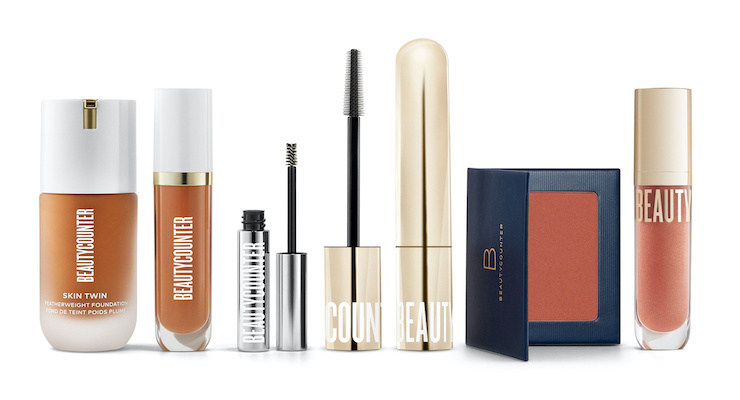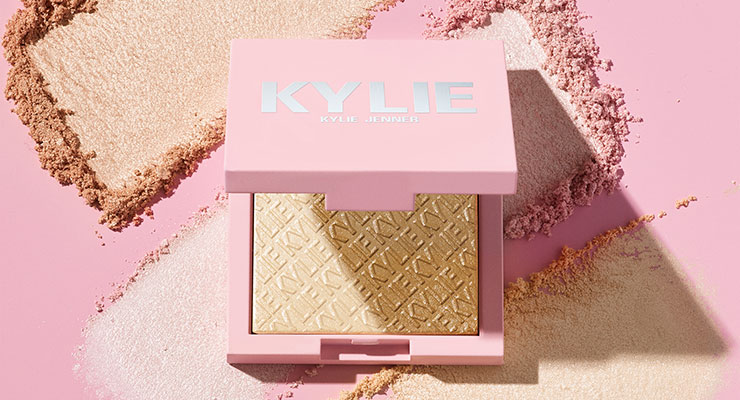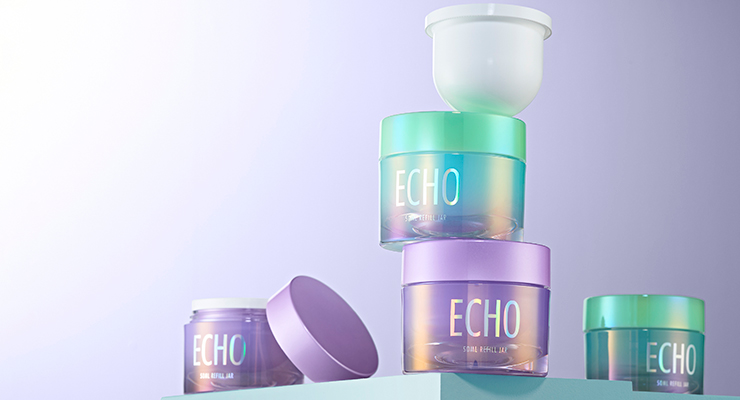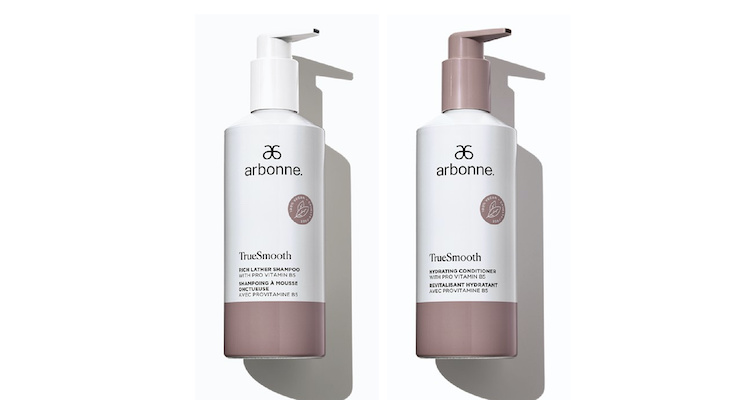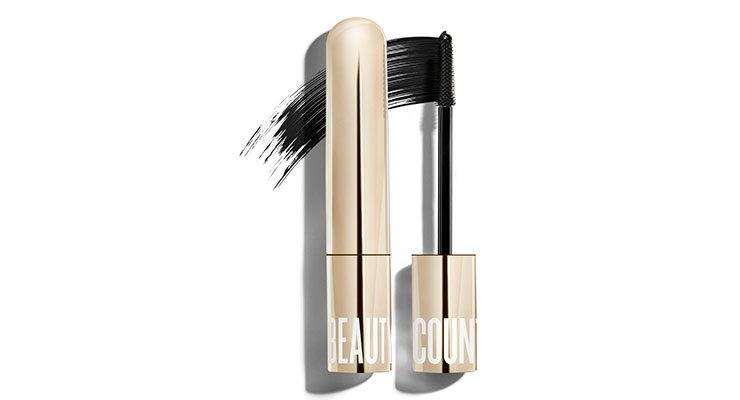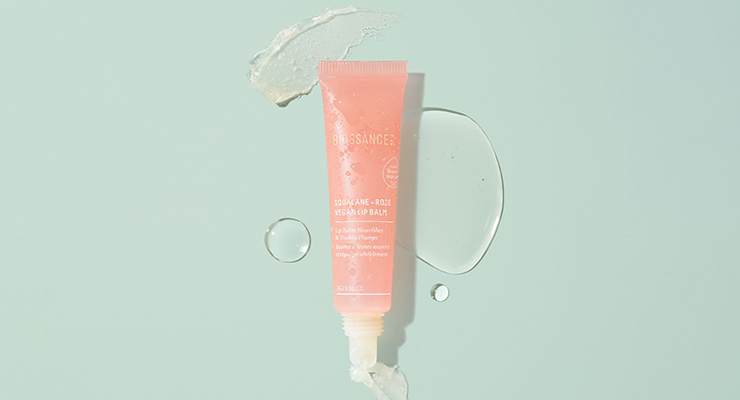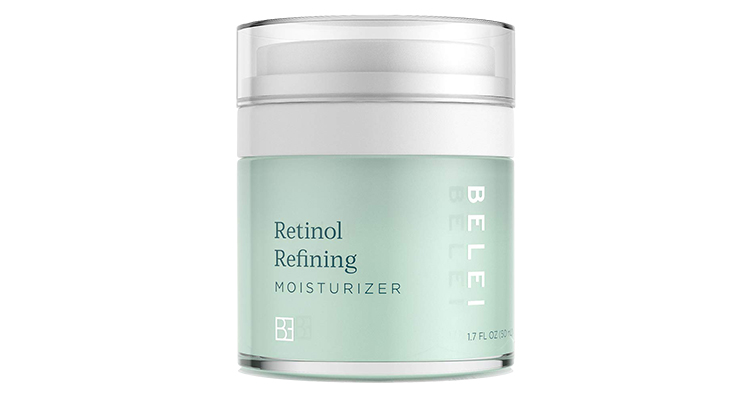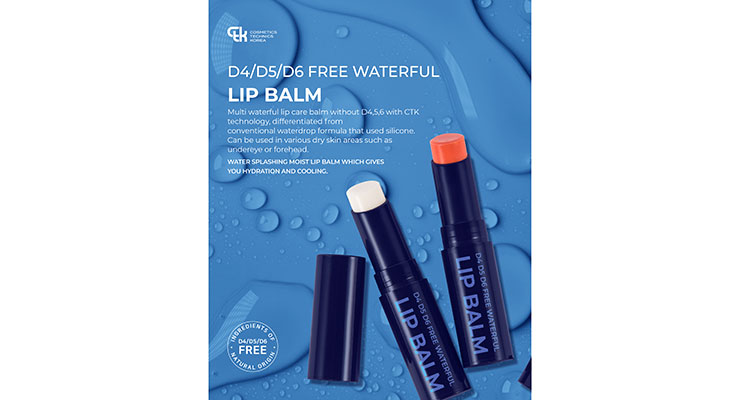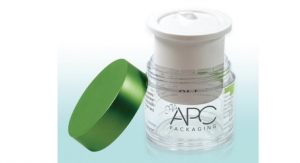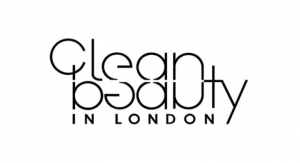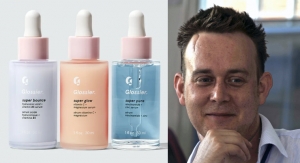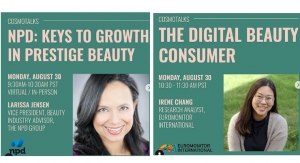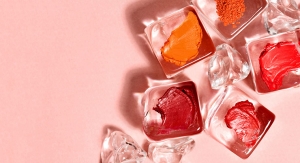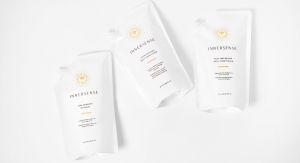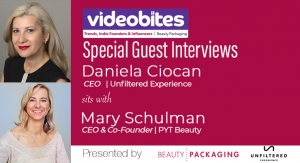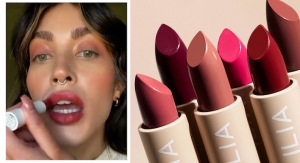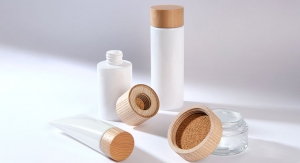Marie Redding, Senior Editor08.23.21
Mirror mirror on the wall, who has the cleanest formulas of all? And the most sustainable packaging?
A magic mirror might be the simplest way to answer those questions, for both consumers shopping for “clean” beauty products and brands that are looking for supplier partners.
The market for “clean” beauty products is expected to rise to $11.6 billion in 2027, growing at a CAGR of 12.07% from 2020, according to Brandessence Market Research, yet there is no industry standard to define “clean.” The definition seems to vary depending on who you ask, and keeps changing. (Plus, there are recent studies that report greater concerns over harmful ingredients such as PFAS, and a move for new legislation.)
As for sustainable packaging, it can get even more complex. There are so many options, plus a slew of factors to consider regarding material type, manufacturing process and more.
Beautycounter, shown above, is one brand managing to balance both—perfectly. Read on for more.
Beauty Brands Aim for 'Clean' & 'Green'
“ ‘Clean’ should describe beauty and personal care products that are made with the safest possible ingredients and have the lowest possible environmental impacts that the market can offer today,” says Alissa Sasso, manager, Consumer Health, Environmental Defense Fund (EDF). “By adhering to this definition, companies can bring clarity to what’s been seen as a confusing space and accelerate the transition to safer products.”“Clean beauty” now implies much more than what is in a product. “At one time, it referred to what’s listed on the label—now clean beauty has evolved,” says Juan Serrano, vice president of branding and marketing, PakLab. “Many chemical ingredient and packaging suppliers are continually ethically sourcing more sustainable materials, from RSPO to ocean plastics. We’re all investing millions in R&D resources to develop innovative technologies, and the list of achievements is too long to mention,” he explains. “Clean beauty and sustainable packaging have gone mainstream,” he says.
Coty’s CoverGirl CleanFresh collection is one recent example of “clean going mainstream.” The brand’s first clean and vegan line doesn’t include sulfates, formaldehyde, phthalates, parabens, or talc. Plus, in a major step toward sustainability, CoverGirl's Clean Fresh Powder compacts were redesigned, and plastic was reduced by 35%.
Now, Coty has relaunched Kylie Cosmetics with cleaner formulas and more sustainable packaging. The brand's lip color packaging has a more modern look, with a larger vial, light pink caps, and new silver logo.
Beautycounter, a leading clean beauty brand, restricts more than 1,800 ingredients from its formulations on its “Never List.” The company requires its manufacturing partners to adhere to its “Blueprint for Clean,” which consists of 12 safety standards, including a sustainable packaging standard. “Clean beauty is complicated, especially because it is not officially defined. We’ve been working hard to advocate for more regulations in the industry so that terms like ‘clean’ can be defined and standardized,” says Lindsay Dahl, head of social mission, Beautycounter.
Beautycounter’s new Think Big All-In-One Mascara represents a move toward innovation in this arena. “With the increased demand for clean beauty comes greater access to safer ingredients,” says Blair Lawson, chief merchandising and marketing officer, Beautycounter. “Since we first launched mascara years ago, manufacturing capabilities have come a long way. Now, with a bigger market for clean, more suppliers are researching alternative ingredients that meet our high standards,” explains Lawson.
Beautycounter’s new mascara includes an innovative tripeptide technology to nourish and condition lashes. “This combination of Panthenol and Biotinvl-Tripeptite helps support stronger, healthier looking lashes over time,” says Lawson. The package is made from 31% post-consumer recycled (PCR) plastic. “This package supports our goal to have 100% of our products in sustainable packaging by 2025,” says Dahl.
Arbonne, a certified B Corp and part of Groupe Rocher, is another brand focusing on “clean & green.” With more than 2,000 ingredients on its “Our Not Allowed” list, the brand aims to achieve several goals by 2025, including: reduce plastic use by 50% and ensure all are post-consumer recycled plastics; ensure all products are recyclable or compostable via mainstream programs, refillable or zero waste.
Arbonne’s new TrueSmooth Shampoo and Conditioner use aluminum bottles with recyclable pumps, in PP, which can be collected curbside. “Our new pumps are a huge step toward meeting our 2025 circular economy product goals,” says Andrea Chase, director of corporate responsibility and social impact at Arbonne.
The Demand for Clean Formulas Is Rising
Suppliers say most of its brand partners are looking for clean formulas and sustainable packaging. “This pairing gives beauty brands an all-inclusive message about ingredients and packaging when it comes to safety, for both consumers and the environment,” says Vonda Simon, president, SeaCliff Beauty.Cheryl Morgan, creative marketing manager, HCP Packaging, agrees and says, “Clean beauty brands are bringing a holistic approach to their product story, continuing the ‘clean narrative’ through to their choice of packaging.” Morgan says their airless and airtight compacts are often chosen by clean beauty brands for makeup products.
Beauty brands looking for clean formulas are no longer a minority. “Clean formulas make up over 75% of all our new requests,” says Jackie Paterno, CTK. “Vegan is a close second,” she says.
PakLab is also responding to higher percentages of “clean” inquiries. “Nearly every beauty brand that we work with on product development requests asks that we use ingredients and packaging materials that meet some level of ‘clean,’ ” says Serrano.
Eleanor Bunting, president, ICS, is also seeing a rise in requests. “We see a major shift toward clean and sustainable, for formulations and packaging,” she says. “Consumer awareness is evolving, and seems to have gained momentum throughout the pandemic. Beauty consumers now demand transparency.”
Different cosmetic ingredients are continually being added to “blacklists.” According to SeaCliff Beauty's president Vonda Simon, “Many brands are now replacing D4, D5 and D6 in cosmetics.” These are types of cyclic silicones, which Sephora just added to its “Formulated Without” list. (Read on for more details about this.)
Joyce Kim, marketing coordinator, NF Beauty Group, says, “We’re seeing a high demand for formulas that exclude silicones, PE/PEG, alcohol, animal-derived ingredients and synthetic fragrance.”
Clear Standards for 'Clean' & 'Green'
Several organizations and companies—even competitors—are working together, alongside beauty industry executives, to help advance clean beauty. Tools and resources are available to assist formulators and manufacturers during product development. Environmental Defense Fund, for example, provides its Clean Beauty Roadmap for Retailers, a clear framework for companies making clean beauty claims.ChemForward, which counts EDF and Sephora among its many co-design partners, is a nonprofit chemical assessment organization. Its cloud-based tool makes it easy for retailers and brands to assess the safety of a cosmetic ingredient, and find safer alternatives.
Retailers are stepping up as well, to help clear confusion for shoppers by defining what clean means. “Retailers realize that toxic-free products are good for business,” says Elizabeth Sturcken, managing director, EDF. “The fact that that each retailer defines ‘clean’ differently, however, means that manufacturers that provide formulas to beauty brands must be well-versed in each retailer’s requirements,” she explains, calling out a few of the first companies to advance clean beauty.
Credo Beauty is the largest clean beauty retailer, and its Dirty List includes over 2,700 prohibited ingredients—making the Credo Clean Standard the strongest in retail.
Credo Beauty partnered with ChemForward this year, adding its Dirty List to the company’s database—making it the most comprehensive ingredient list linked to health and environmental issues in the industry. “We connect our brand partners and product formulators with platforms like ChemForward so that they can comply with our Dirty List, and go beyond it,” says Mia Davis, director of environmental and social responsibility, Credo Beauty. “We want products on our shelves to use ingredients that have been assessed for safety and environmental impact. This is next-level clean beauty.”
Credo Beauty also partnered with Ulta Beauty in October 2020 for the launch of the “Conscious Beauty at Ulta” program. The curated Credo Collection, which now includes nine brands, meets the Credo Clean Standard and is sold at 100 Ulta Beauty stores across the U.S. and on its website. Annie Jackson, co-founder and COO, Credo Beauty, said, “Bringing this collection to life with Ulta Beauty helps us share the highest standards in clean beauty with an expanded audience. We are thrilled to share our knowledge and relationships to create platforms together for new, sustainable beauty brands to grow.”
Ulta Beauty says it created its Conscious Beauty at Ulta program when its research showed that 75% of consumers wish it were easier to know which products are truly “clean,” while 63% of shoppers said “safer for the planet” options are important.
Conscious Beauty at Ulta certifies brands across five key pillars: clean ingredients, cruelty-free, vegan, sustainable packaging and positive impact. Earlier this year, Ulta Beauty launched in-store and online guidance to help shoppers identify clean products that comply with its “Made Without List,” which includes phthalates, talc, PFAs and more.
Ulta Beauty will ensure that 50% of all packaging sold, including its Ulta Beauty Collection, will be made from recycled or bio-sourced materials or will be recyclable or refillable by 2025. “We have the unique opportunity to inspire positive change in our industry,” said Dave Kimbell, president of Ulta Beauty. “Our focus is to educate, guide and simplify product choice and elevate those brands doing good for our world. This initiative helps our guests readily navigate our assortment through the lens of what matters most to them. We are thrilled to offer such transparency.”
Sephora addressed the issue of cosmetic ingredients in June 2018 when its Clean at Sephora program debuted. A dozen or so potentially harmful ingredients were on its first Formulated Without list, including sulfates, SLS and SLES, parabens, formaldehyde, and phthalates, which brands that are sold at Sephora must comply with if they want to carry the “Clean at Sephora” seal.
Sephora expanded the list in 2019 to include 50 ingredients, adding aluminum salts, ethanolamines DEA/TEA/MEA/ETA, nanoparticles, oxybenzone, resorcinol, retinyl palmitate, talc if not asbestos-free, toluene, triclosan, and more.
This year, Sephora added octinoxate, PFAs compounds, and nitromusks/polycyclic musks to the list, giving fragrance brands an extension until March 31, 2022, to comply. All cyclic silicones will also be prohibited next year, and restrictions on ethoxylated ingredients (including PEGS/polyethylene glycol) and EDTA (including derivatives) will take effect, with limits set by product type.
Sephora’s team worked with EDF and ChemForward to develop safer alternatives for several high-priority chemicals, including benzophenones, ethanolamines, and cyclic silicones, EDF reports. “Sephora set the industry standard for advancing safe products by becoming the first major specialty beauty retailer to issue a chemicals policy,” states EDF’s Sasso.
Expanding beyond a product’s ingredients, Sephora launched its Clean + Planet Positive program in July. It includes benchmarks for brands regarding climate commitments, sustainable sourcing, responsible packaging and environmental giving. Packaging criteria include reducing unnecessary materials, designing for recycling and eliminating all single-use items that cannot be recycled, composted or reused.
The first brands to carry Sephora’s Clean + Planet Positive seal include the retailer’s own Sephora Collection, plus: Aether, Alpyn Beauty, Biossance, Briogeo, Caudalie, Ellis Brooklyn, Farmacy, Herbivore, Tata Harper, Selfless by Hyram, Ren, Necessaire, Prima, Maison Louis Marie, Susteau, Saie and Youth to the People.
NF Beauty is one supplier that often works with beauty brands to ensure its formulations meet certain criteria, including Sehora's Clean label. “We are strongly experienced in providing clean formulations,” says Kim. NF Beauty offers beauty brands formulas and packaging, turnkey.
SeaCliff Beauty’s team is also well-versed in meeting various 'clean' guidelines. “Our turnkey division understands the growing market for clean beauty, and we have formulas that are Sephora Clean, EWG Verified, and meet the Credo Clean Standard,” says Simon. “We offer stock and custom packaging solutions in addition to clean beauty formulas,” she adds.
Amazon has its Climate Pledge Friendly badge and Compact by Design verification. Its skincare brand, Belei, is formulated without parabens, fragrances, sulfates, and phthalates. PakLab worked with Amazon to provide the airless jar for Belei Retinol Refining Moisturizer, shown above.
PakLab has a long history of developing formulas for pioneering brands in clean beauty, such as Beautycounter, and the first EWG Verified products from Environmental Working Group (EWG). “We were one of the first CMOs to research and formulate using clean ingredients back in 2004,” says PakLab’s Serrano. EWG's Skin Deep online safety guide for cosmetics and personal care products launched in 2004, and was the first-ever effort to help consumers access cosmetic ingredient information.
“EWG’s Skin Deep quickly became the ‘watchdog’ for the slew of products that were jumping on the ‘natural’ bandwagon by adding a few marketing words to labels. ‘Greenwashing’ created mass confusion at a time when consumers were just beginning to pay attention to words like ‘parabens’ and ‘SLS-free,’” explains PakLab’s Serrano. Today, EWG’s searchable database highlights information about the potential hazards associated with chemicals in products and has grown to include ratings for more than 70,000 products.
Serrano further explains that “clean” didn’t become a buzzword in beauty until food labels were being scrutinized. “Around the same time that EWG launched Skin Deep, the EU began requiring ingredient labels on food packaging to include full INCI names—and it was the first time the term “Clean Label” was used. Cosmetic companies that wanted to be fully transparent on their ingredient claims quickly followed this lead,” says Serrano.
An early pioneer in leading the beauty industry down a “cleaner” path was Walmart, when it worked with EDF to develop its Sustainable Chemicals Policy in 2013, requiring all suppliers to disclose all product ingredients on labels. Then, partnering with Target, the competitors worked together for three years to create the first science-based Beauty and Personal Care Scorecard of 32 key performance indicators.
EDF’s Boma Brown-West said in 2018 that this move marked a “sweeping market demand signal for safer and more sustainable beauty and personal care products.” She commented, “The scorecard is a breakthrough for quantifying product sustainability, or the degree to which a product does what it is supposed to do without harming the user, the makers or the planet.”
Today, Walmart aims to reduce all chemicals of concern in consumable products by 10% by 2022—and it's impactful because it is the equivalent of removing 55 million pounds of chemicals from the environment, wrote EDF's Elizabeth Sturcken “To accomplish this, Walmart suppliers must share specific goals and timelines for which chemicals it will phase out first,” she explains.
What Are the Most Often Requested Clean Beauty Ingredients?
What are some of the clean formulas or ingredients that are most often requested—and what will be available next? We asked suppliers.“Our most recent venture has involved locking in a beautiful line of different ceramide-based products that benefit the skin, effortlessly,” says NF Beauty’s Kim. “The active ceramide ingredient originates from a microorganism fermentation-based process, instead of extracting it through a synthetically manufactured process. This makes it very similar to our skin structure when applied, instead of extracting it through a synthetically manufactured process,” Kim explains.
NF Beauty’s Ceramide line includes toners, serums, and creams. Ceramides act as a replenishing and extremely effective protective agent. They encourage skin health, and act as a catalyst in preserving the skin’s integrity,” Kim explains.
NF Beauty also offers a line of PEG-Free Cleansing balms. “Our balms first start out with a sorbet-like consistency, and upon contact with the skin they transform into a silk-like oil, leaving the skin plump, hydrated and radiant,” Kim says.
Seacliff Beauty recently developed a lightweight SPF moisturizer with Jazmine Beauty, a clean beauty brand. “This formula contains a mineral-rich deep sea water complex to soothe and strengthen the skin’s barrier,” says Simon.
The team at SeaCliff Beauty is also continuing to experiment with cleaner alternatives for D4, D5, and D6 ingredients. “We are using coconut alkanes and Cetiol Ultimate. Coconut Alkanes is a natural type of silicone derived from coconut oil and is used as an emollient in skin and hair formulations. Cetiol Ultimate is a 100% renewable emollient that is volatile with ultra-high spreadability. It is certified by EcoCERT,” Simon explains.
CTK provides full-service turnkey with innovative formulations manufactured in South Korea. “We have made great strides with our clean formulations, and they don’t contain silicones, PEG’s, or microplastics, with only natural colorants,” says Paterno.
CTK offers brands a hydrating balm that is “super-moisturizing,” she says, with a “cooling” feel. “It’s called WaterFUL, and it doesn’t contain D4, D5 or D6 in the formula,” she says. “Typically, you would need silicones to create this type of feel, but this formula is very special. Clean formulas have come a long way,” she says. CTK’s WaterFUL balm is for lips, as well as dry areas of the face.
“All types of ‘clean’ skincare are popular, and cleansers are often requested,” says CTK’s Paterno. CTK offers brands its Superclean Mild Cleansing Line, which includes a cleansing jelly, cleansing balm, and cleansing water, all formulated without PEG, silicones and microplastics. “These cleansers are all mild on the skin, but tough on makeup. They can be used on eyelids, and contain a natural ingredient that mimics human tears,” Paterno says.
Packaging That's Most in Demand from 'Clean & Green' Beauty Brands
Beauty brands that are working with suppliers on clean formulas are also requesting sustainable packaging.What types are most often requested?
“We see a big push in the use of fully recyclable materials, such as aluminum or glass, as well as ocean plastics,” says PakLab’s Serrano. “Brands that still include words like ‘natural’ or ‘organic’ on their labels are also looking for packaging made of different cellulose fibers, and soy-based inks,” he says.
NF Beauty’s Kim says minimalist designs are in. “Clean beauty goes hand-in-hand with ‘less is more,’ so we see aspects of minimalism in packaging. There is a high request for mono-material components due to its ‘ease of efficiency in recyclability,’ ” Kim explains. “There is also an influx of brands pushing for refillable components because refillable is a more soundproof way to reduce plastic,” she says.
ICS’s Bunting also says there is a move toward sustainable packaging that helps convey “clean” through design. “Packaging is taking on more simple, clean and organic shapes,” she says. “Classic round or boxy and geometric forms reflect the simplicity of the ‘clean’ formulations within,” she explains. “Decoration is also being stripped back to help convey the purity of the formulation,” she adds.
“Clear packaging, simple block colors, or simple text decorations are being used,” she says.
Bunting also sees a rise in requests for PCR plastics, which the company has been providing for over 20 years. “We are highly skilled in providing PCR packaging options in various resins and percentages from certified PCR resin sources,” she says.
ICS’s sustainable packaging options also include glass, aluminum, bio-resins, ocean plastics packaging and more. “Refillable, reusable and double-duty packages are also more sought-after,” she says.
Recently, ICS worked with Biossance, a leading clean brand, to develop its Squalane + Rose Vegan Lip Balm. “The elegant tube is 100% renewable sugarcane bio-resin,” says Bunting. “Sugarcane-derived packaging is a clean alternative to fossil fuel-based alternatives, and this tube is sustainably sourced with minimal impact on natural resources,” she explains. The tube packaging is finished with soft pink silk screen decoration and has a silicone slanted applicator and screw-on cap design.
APC, which often works with beauty brands to fulfill requests for sustainable packaging, says PCR is at the forefront of sustainability, as well as glass. “We offer our Mono-Material System paired with sustainable design,” says Robert Bulla, director of engineering & innovation at APC Packaging. The supplier’s Mono-Material System has been applied to all of its newest packaging innovations, including its mono-material GSPP jar series and its polypropylene dropper. “We achieved the right level of clarity for the pipette, and the correct feel from the dropper bulb,” says Bulla. “These items can all be recycled without disassembly,” he says.
The team at HCP is also fulfilling lots of requests. “We are finding that ‘clean’ beauty brands are very interested in a variety of sustainable options for packaging, whether it is refillable solutions, bio-based materials; or mono-material designs,” says Cheryl Morgan, creative marketing manager, HCP Packaging. “Clean beauty brands are continuing the ‘clean’ narrative through to their choice of packaging, but retaining the high-performance and quality consumers expect,” she says.
HCP offers solutions for all the directives Morgan mentions, including PCR and chemically recycled materials from trusted and fully traceable sources. “Plus, we offer new bio-based material innovations such as EcoWood-Flexi for molded mascara and brow applicators,” Morgan says.
HCP also holds the ISCC PLUS certification for Eastman Renew materials in multiple manufacturing locations. “This allows us to offer sustainability and the same level of performance and aesthetics as per injection-molded virgin materials in PET, PETG and PCTA,” Morgan says. “It ensures crystal-clear packaging for color cosmetics and skincare,” she adds.
Refillable packaging is much more in demand, experts say. “The use of refillable packaging has accelerated over the past year, especially for skincare,” says Lynn Lu, skincare product manager, HCP Packaging. “The switch to refillable packaging is an important step towards a more climate-conscious approach to cosmetics and skincare consumption—and it’s being embraced in our industry like never before,” she says.
HCP’s new stock pack, the Echo 50ml Refill Jar, is ideal for creams and skincare treatments. “The luxurious outer jar displays a durable yet aspirational thick-walled aesthetic, which is retained as the inner pod is replaced, again and again,” Lu says. The outer jar is recyclable PET, with a R-PP rechargeable inner pod. HCP’s partner is Pum-Tech Korea, which offers a minimum of 30% PCR overall content for all packs, including those with mixed materials, and plans to offer sustainable materials for all containers by 2022.
SeaCliff offers brands a variety of sustainable packaging solutions. “We have mono-material packaging, bio-resins and refillables. In addition, we offer packaging made with Eastman Renew chemically recycled PET, as well as packaging made from up to 50% PCR materials,” Simon says.
More Innovation Ahead
Suppliers expect more innovation in the coming years, to further advance clean beauty, with more effective formulations and more sustainable packaging.APC’s Bulla says, “Sustainability has been at the forefront of the industry and the goals laid out by global and national brands cannot be accomplished without innovation, and we expect to see more options in the future.”
NF Beauty’s Kim says consumers are driving beauty brands to innovate. “They are more invested, and have higher expectations,” she says. “Labs and manufacturers will continue to find new ways to provide formulas that have beautiful textures and benefits, without needing to include harmful ingredients. We expect to see exponential growth in product development innovation,” she predicts.
SeaCliff’s Simon agrees, and says, “With over 20 years in the industry we have access to the most groundbreaking ingredients, researchers, and packaging solutions to bring a beauty brand’s vision to life, so we see an exciting future ahead.” Simon adds, “The possibilities are endless.”

